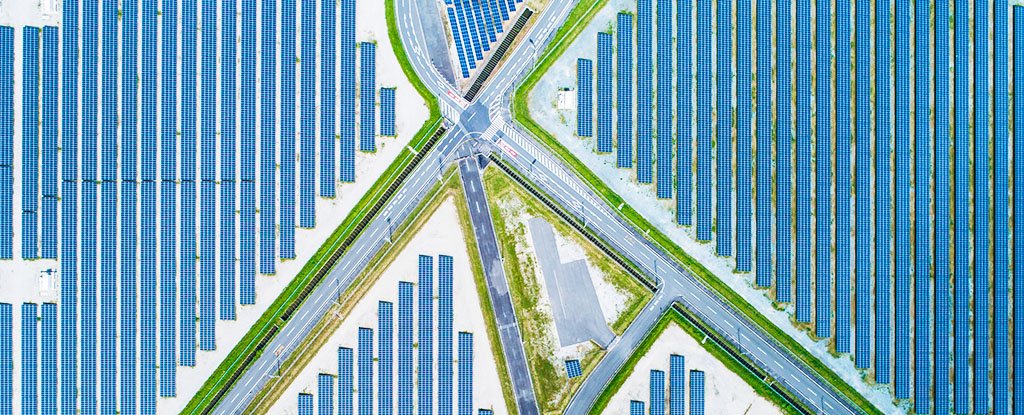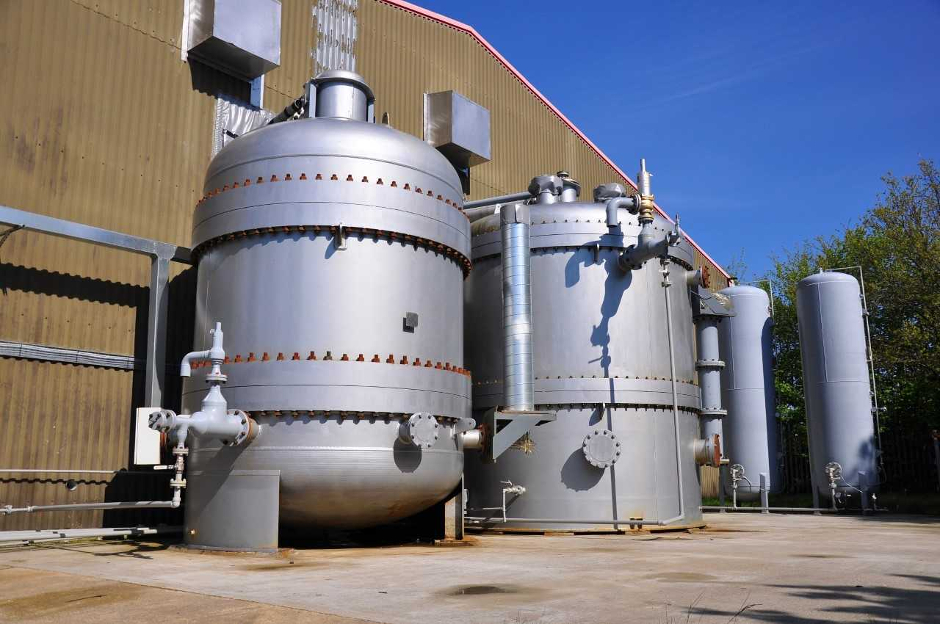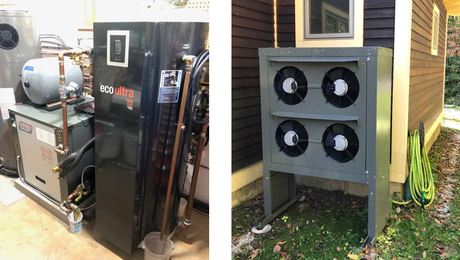Yes. And I just threw 4500 in there because that's what mine is. Can certainly go less, and still meet needs. I think the next common step down would be 3000w? Not sure.
Home battery backup systems
- Thread starter SpaceBus
- Start date
-
Active since 1995, Hearth.com is THE place on the internet for free information and advice about wood stoves, pellet stoves and other energy saving equipment.
We strive to provide opinions, articles, discussions and history related to Hearth Products and in a more general sense, energy issues.
We promote the EFFICIENT, RESPONSIBLE, CLEAN and SAFE use of all fuels, whether renewable or fossil.
You are using an out of date browser. It may not display this or other websites correctly.
You should upgrade or use an alternative browser.
You should upgrade or use an alternative browser.
It would be much easier to insulate my current range boiler and add in some kind of indirect heating with a heat pump. I've been watching the air to water heat pumps since leaning about them on this forum. I'd like to keep the wood cook stove integration as well as the rooftop SWH. In the future we want to add a second 40 gallon range boiler in parallel with the current setup to double capacity for a planned large bathtub. I'm also considering having a more robust water coil made for the cookstove, the current coil is just a U shape and I'd like at least one loop.
Why not have the output of the range boiler feed a HPWH? If the cookstove is running, the range boiler water is warm (fall, winter, spring) and if it is not running (summer?) then the range boiler water is cold. Then, the HPWH just picks up the difference.
I will do something similar with my geothermal heat pump installation. That stores water in a 180 gallon tank, and that tank has a heat exchanger coil in the top. I will run the cold water inlet to the HPWH through the top heat exchanger coil in the 180 gallon geothermal storage tank. When that tank is warm, it pre-heats the water. When not, the HPWH has to do most of the heating.
I will do something similar with my geothermal heat pump installation. That stores water in a 180 gallon tank, and that tank has a heat exchanger coil in the top. I will run the cold water inlet to the HPWH through the top heat exchanger coil in the 180 gallon geothermal storage tank. When that tank is warm, it pre-heats the water. When not, the HPWH has to do most of the heating.
I've seen air to water heat pumps set up on this principle, albeit with a smaller tank. I still look longingly at the American Solartechnic unit. Right now I have the outlet of the range boiler feeding the on demand water heater. We don't have a good space in the house for even a 50 gallon HPWH. I guess the builder assumed the rooftop solar collector would be shouldering most of the work for the original 50 gallon resistance heater. I've even considered adding two heating elements to the range boiler to make it a bit of a hybrid. I could also still add a HX coil inside the tank (two open inlets on the side) or make an indirect setup with a water to water HX that is external to the tank (how I plan to integrate the SHW).Why not have the output of the range boiler feed a HPWH? If the cookstove is running, the range boiler water is warm (fall, winter, spring) and if it is not running (summer?) then the range boiler water is cold. Then, the HPWH just picks up the difference.
I will do something similar with my geothermal heat pump installation. That stores water in a 180 gallon tank, and that tank has a heat exchanger coil in the top. I will run the cold water inlet to the HPWH through the top heat exchanger coil in the 180 gallon geothermal storage tank. When that tank is warm, it pre-heats the water. When not, the HPWH has to do most of the heating.
Sorry, kind of rambling, but trying to touch on all of your points. I think long term I'll end up with an air to water HP minisplit to replace my electric baseboard heaters which should also be able to pick up any slack the cookstove or SHW can't handle. The tankless water heater doesn't use much electricity now. The first month I had it installed we used just over 300 KWh for the whole billing cycle, my last bill was $55.
Indeed, this is why I'm looking at a heat pump for the long run. When I installed the current setup, our old water heater elements had rusted away to almost nothing and there was no filtration from the well. It's not perfect yet, but I'm working on it. Hopefully the air to water HP technology will come down in price a bit.It's not really the overall KWH it uses, it's the huge load it puts on your electric system when it does heat.
Or at least it would be for me. If it fits for you, well, that's good.
What is the max output of your HP/hot water system? We have a small house, 1,200 sqft, so I'm thinking a 28-32k btu unit would be able to carry the house if necessary and also manage DHW. I'm hoping to not need 180 gallons of storage!
What is the max output of your HP/hot water system? We have a small house, 1,200 sqft, so I'm thinking a 28-32k btu unit would be able to carry the house if necessary and also manage DHW. I'm hoping to not need 180 gallons of storage!
I bought the smallest that I could find that would provide >120 degree water (my GeoStar is rated up to 140 degrees, though I would like to avoid temperatures above 120 degrees if possible). The rating is 3 tons (36,000 BTU) - twice what I need at 0 degrees F. You don't need a 180 gallon tank - a 2.5 or 3 ton GSHP will keep up nicely to DHW needs (and your house heating needs as well). I admittedly way oversized my storage tank because:
- I wanted to reduce the short cycling cycle of the GSHP as much as possible
- I wanted to have the ability to store 4 to 5 hours of heat for my house in the event of a power outage
- I wanted to have the ability to benefit from future utility programs in which they would pay me to eliminate high wattage electric loads during certain times of the day (I believe that this will happen in NY state in the next 5 years).
- This tank had both the upper and lower heat exchanger coils, and I thought at one time I would want both to integrate solar hot water panels into the system (I now have no plans to do so).
- Once I purchased a 120 gallon I thought I may as well get the 180 gallon.
- The 180 gallon was the biggest that would fit through a 36" door opening.
Keep in mind that my GSHP is outdoor-reset controlled, so if the outside temperature is 0 degrees the 180 gallon tank (that provides hot water to the radiant floors) will be at about 123 degrees F. At 32 degrees outdoor temperature, the water is more like 100 degrees, and at 50 degrees outdoor temperature the tank temperature is only about 90 degrees. So this is a pre-heater only - you need something else to boost the water temperature for DHW use after that.
But this might be a nice design to feed your on-demand electric water heater if you had a GSHP for home heating. It's a lot cheaper than the de-superheater options for making DHW, and it has a lot more capacity to help with the DHW loads. The nice thing about my tank is that the upper heat-exchanger coil that I'll route my cold water inlet through holds a lot of water (I recall about 9 gallons). So there is a lot of capacity there. And if you are only drawing 1.5 or 2 gallons a minute of hot water, then it should be pretty much infinite capacity at tank temperature.
In the summer, I'll have no pre-heating of the cold-water inlet since I'll have no call for house heat through the outdoor reset controller on the GSHP. That's ok - I want the HPWH to work harder in the summer and cool/dehumidify the basement.
My main issue is room for a large tank. Even 80 gallons might be too big. The old water heater was in a utility room that has been repurposed. The 40 gallon range boiler is about the tallest tank I can fit in the current space. A horizontal tank would work and something I have considered. Where do I find these electric hydronic storage tanks?I bought the smallest that I could find that would provide >120 degree water (my GeoStar is rated up to 140 degrees, though I would like to avoid temperatures above 120 degrees if possible). The rating is 3 tons (36,000 BTU) - twice what I need at 0 degrees F. You don't need a 180 gallon tank - a 2.5 or 3 ton GSHP will keep up nicely to DHW needs (and your house heating needs as well). I admittedly way oversized my storage tank because:
I recall there being a lot of choices in 80 gallon tanks with an upper heat-exchanger. That's what I would recommend for a typical install. Frankly, if I were doing this again, that's probably what I would have gone with.
- I wanted to reduce the short cycling cycle of the GSHP as much as possible
- I wanted to have the ability to store 4 to 5 hours of heat for my house in the event of a power outage
- I wanted to have the ability to benefit from future utility programs in which they would pay me to eliminate high wattage electric loads during certain times of the day (I believe that this will happen in NY state in the next 5 years).
- This tank had both the upper and lower heat exchanger coils, and I thought at one time I would want both to integrate solar hot water panels into the system (I now have no plans to do so).
- Once I purchased a 120 gallon I thought I may as well get the 180 gallon.
- The 180 gallon was the biggest that would fit through a 36" door opening.
Keep in mind that my GSHP is outdoor-reset controlled, so if the outside temperature is 0 degrees the 180 gallon tank (that provides hot water to the radiant floors) will be at about 123 degrees F. At 32 degrees outdoor temperature, the water is more like 100 degrees, and at 50 degrees outdoor temperature the tank temperature is only about 90 degrees. So this is a pre-heater only - you need something else to boost the water temperature for DHW use after that.
But this might be a nice design to feed your on-demand electric water heater if you had a GSHP for home heating. It's a lot cheaper than the de-superheater options for making DHW, and it has a lot more capacity to help with the DHW loads. The nice thing about my tank is that the upper heat-exchanger coil that I'll route my cold water inlet through holds a lot of water (I recall about 9 gallons). So there is a lot of capacity there. And if you are only drawing 1.5 or 2 gallons a minute of hot water, then it should be pretty much infinite capacity at tank temperature.
In the summer, I'll have no pre-heating of the cold-water inlet since I'll have no call for house heat through the outdoor reset controller on the GSHP. That's ok - I want the HPWH to work harder in the summer and cool/dehumidify the basement.
Just search for geothermal storage tanks or geothermal buffer tanks.
This company offers smaller sizes with an internal heat exchanger https://www.123zeroenergy.com/pdf-files/solarstor-specs.pdf
Mine is a Stiebel Eltron https://www.stiebel-eltron-usa.com/sites/default/files/pdf/brochure-indirect-dhw-storage-tanks.pdf
Looks like my upper heat exchanger is only 2.5 gallons. Still, it is rated for basically an infinite continuous draw at whatever gallons/minute that I can practically pull through the tank.
This company offers smaller sizes with an internal heat exchanger https://www.123zeroenergy.com/pdf-files/solarstor-specs.pdf
Mine is a Stiebel Eltron https://www.stiebel-eltron-usa.com/sites/default/files/pdf/brochure-indirect-dhw-storage-tanks.pdf
Looks like my upper heat exchanger is only 2.5 gallons. Still, it is rated for basically an infinite continuous draw at whatever gallons/minute that I can practically pull through the tank.
Thanks for the link, I like the 38 gallon tank, and it will fit in my space. I have artificially limited my plumbing inlet to 2.2 gpm so that the tub won't outflow the on demand water heater. The rest of my faucets are less than 1.5 gpm anyway. Thanks for your input.Just search for geothermal storage tanks or geothermal buffer tanks.
This company offers smaller sizes with an internal heat exchanger https://www.123zeroenergy.com/pdf-files/solarstor-specs.pdf
Mine is a Stiebel Eltron https://www.stiebel-eltron-usa.com/sites/default/files/pdf/brochure-indirect-dhw-storage-tanks.pdf
Looks like my upper heat exchanger is only 2.5 gallons. Still, it is rated for basically an infinite continuous draw at whatever gallons/minute that I can practically pull through the tank.
Ugh. I am not a fan of electric on demand heaters at all. I like a big, well insulated, HP heated tank. I don't even worry about HW backup, bc the tank stays warm for days and days (and I just ration usage, i.e. navy showers).
As for a battery bank, buy an EV, and get a big (1500W) sine wave inverter for ~$300, and hook it up to the 12V accessory system. Most EVs can put out 1300W continuous and 2000W peak into 12V. If its a pure EV (like my old Bolt), you can run all the small (120V) loads in the house for several days, if its a PHEV (like my current Volt) a tank of gas will keep it going for a week or more.
I made up a suicide plug with two hot tie for a dryer plug, which drives the two hots together (shutting off all 240V appliances) and backfeed my house with this rig (I have an interlock on the grid feed). Between the woodstove, the hot water tank, and a small propane camping stove, I am all set with heat, HW, food and power for several days. For <$500 total, and unlike my neighbors genny, my rig is silent and I am not slinging big gerry cans of gasoline 2X per day.
As for a battery bank, buy an EV, and get a big (1500W) sine wave inverter for ~$300, and hook it up to the 12V accessory system. Most EVs can put out 1300W continuous and 2000W peak into 12V. If its a pure EV (like my old Bolt), you can run all the small (120V) loads in the house for several days, if its a PHEV (like my current Volt) a tank of gas will keep it going for a week or more.
I made up a suicide plug with two hot tie for a dryer plug, which drives the two hots together (shutting off all 240V appliances) and backfeed my house with this rig (I have an interlock on the grid feed). Between the woodstove, the hot water tank, and a small propane camping stove, I am all set with heat, HW, food and power for several days. For <$500 total, and unlike my neighbors genny, my rig is silent and I am not slinging big gerry cans of gasoline 2X per day.

There's a Simple Way to Store Renewable Energy, And We Already Have The Technology
The effect that fossil fuels are having on the climate emergency is driving an international push to use low-carbon sources of energy.
Perhaps someday this will be scalable.
I had two projects that were approved for a subsidy for a flow battery, unfortunately both parties decided not to do the projects and returned the rebate. They are pretty slick, there is a fuel cell like device that converts a charged electrolyte from a large tank to electricity, the discharged electrolyte goes to a second large tank. When power is cheap, the device reverses the flow and charges the electrolyte back to the charged tank. The electrolyte base is reusable for long time (years) and this version was realtively non toxic and didnt need strategic materials. The device does need some basic annual maintenance. I think it could be scaled sown somewhat but doubt it would get down to home size.
They provide a working example at Newcastle University.

 www.theengineer.co.uk
www.theengineer.co.uk

Newcastle University connects first grid-scale pumped heat energy storage system - The Engineer
World-first in grid-scale pumped heat energy storage places UK at forefront of energy storage R&D, team claims
 www.theengineer.co.uk
www.theengineer.co.uk

Air-to-Water Heat Pump Retrofit - GreenBuildingAdvisor
Lessons from a mechanical engineer on replacing a propane boiler with an air-to-water heat pump system.
I'll probably do something very similar to this in a few years. This will make my non wood heat capable of functioning on solar. Currently the "primary" heat is electric baseboard. The above setup should easily heat and cool my 1200 sqft house, provide DHW, and make it work with my existing range boiler/woof cookstove DHW.
Similar threads
- Replies
- 9
- Views
- 3K
- Replies
- 19
- Views
- 8K
- Replies
- 43
- Views
- 8K
- Replies
- 11
- Views
- 4K

